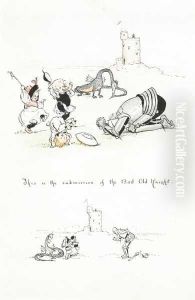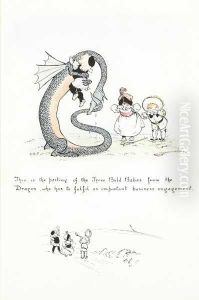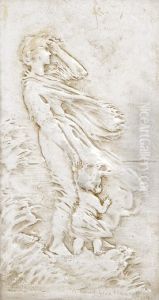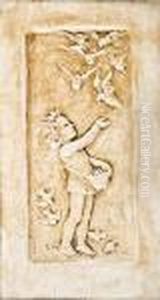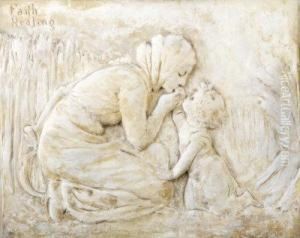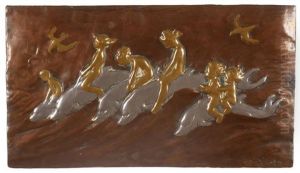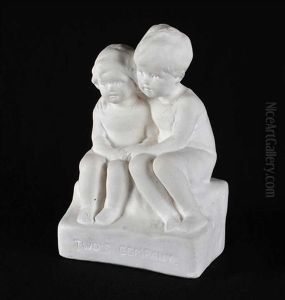Sophia Rosamund Praeger Paintings
Sophia Rosamund Praeger was an Irish artist, sculptor, and writer, born on September 6, 1867, in Holywood, County Down, Ireland. She was a prominent figure in the Irish Arts and Crafts Movement, which flourished at the end of the 19th and the beginning of the 20th century. Her work reflects a diverse set of skills and interests, as she was not only a visual artist but also contributed to the literary culture of her time.
Praeger's family environment was supportive of her artistic pursuits. Her brother, Robert Lloyd Praeger, became a renowned naturalist, and the intellectual atmosphere in their household likely nurtured her multifaceted talents. She received her education at Sullivan Upper School and later trained at the Belfast School of Art. Furthering her studies, she attended the Dublin Metropolitan School of Art (now the National College of Art and Design), where she was exposed to the broader currents of the Arts and Crafts Movement and the Celtic Revival.
After her formal education, Praeger began to produce a range of artworks, including illustrations, pottery, and sculptures. Her sculptures often featured children, animals, and figures from fairy tales and folklore, embodying a sense of whimsy and innocence. She worked with various materials, but her ceramic and bronze works are among the most notable. Praeger's artistic style was characterized by a simplicity of form and a focus on the intrinsic beauty of her subjects.
In addition to her visual art, Praeger wrote and illustrated several children's books, reflecting her love for storytelling and her ability to engage with a younger audience. Her literary works complemented her visual creations, both echoing the themes of Irish mythology and rural life. Praeger remained active in the Irish art scene throughout her life, exhibiting her work widely and contributing to cultural events and organizations.
Sophia Rosamund Praeger passed away on May 19, 1954, in her hometown of Holywood. She left behind a legacy of artistic contributions that continue to be appreciated for their charm, technical skill, and reflection of Irish cultural identity. Her works are held in various collections and continue to be studied for their representation of early 20th-century Irish art and design.
